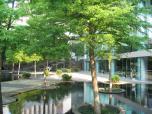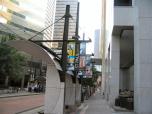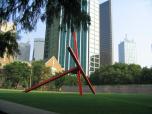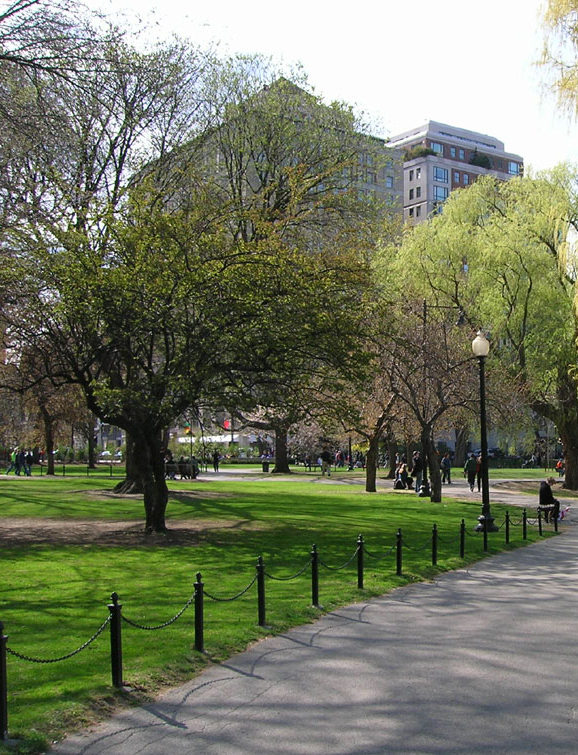




The "Common" Park
Articles
The "Common" Park
Posted: October 7, 2012 by Chuck DeShazo
Bostonians love a good Sunday afternoon in late September outdoors when the leaves are beginning to change, and the air is a bit crisp, but still carrying some of the warmth of summer. If one lives in the city, the Boston Common is a great outdoor venue to spend one’s time, throwing a frisbee with friends, enjoying a picnic, listening to a concert, or having a casual date.
Boston, for being the first real major city in America, is small in geographic size and quite dense. With a land area of just 48.4 square miles, it is the second smallest city in the U.S. in terms of living space after San Francisco with 47 square miles. Its population density is 19.94 persons per acre, compared to Chicago with 18.55 persons and Dallas with 5.9 persons. 16 percent of the land in Boston is dedicated to public open space. The most prominent parcel of that open space is of course Boston Common. As it dates to 1634, it is the oldest city park in the United States. It consists of 50 acres of land bounded by Tremont, Park, Beacon, Charles, and Boylston Streets. Look at the map for its location in Boston.
It is not only the first city park in the United States, it also happens to be the burial ground for some famous people. William Billings, a composer, is buried there, along with Samuel Sprague, a member of the Boston tea party and one who fought in the Revolutionary War, and his son Charles Sprague, one of America’s earliest poets.
Some of its earliest dwellers were cows who used to roam the hallowed grounds of Boston Common, dwelling there in large numbers during the 1630’s and 1640’s. As affluent families purchased more and more cows, overgrazing occurred on the Common, leading to limits being placed upon grazing there in 1646, of 70 cows at any one time. Cows continued to dwell there however, up until 1830, when they were officially banned by Mayor Harrison Gray Otis.
Over the years, the Common has been the site of some major socio-political events as well. Click on the different places on the map below to see places of historical significance in or around the park. Riots took place there in 1713 due to food shortages in the city. 100 people gathered at the Common in 1965 to demonstrate against the Vietnam War. That number multiplied by 1,000 when another anti-war demonstration occurred there on October 15, 1969. The Common has lent its presence to oratorical greatness by the famous individuals who have given speeches there such as the Reverend Martin Luther King Jr., and Pope John Paul II. Judy Garland gave her largest concert ever on the Common in 1967.
Today the Common serves as a public park for all to use for formal or informal gatherings. Concerts, protests, ball games, and ice skating (on Frog Pond) take place regularly there. The Common was declared a U.S. National Historic Landmark in 1987, which is managed by the Boston Park Department. A private advocacy group, the Friends of the Public Garden, provides additional funding for maintenance and special events.
The Boston Common has literally been at the center of a lot of American history. Some of the key points of interest around it include: Park Street Church, Union Club, Granary Bural Ground,
Black Heritage Trail, Cheers Boston, Boston Public Garden, Arlington Street Church, Central Burying Ground, Freedom Trail, and others. Click on the map below to see these and other attractions.
